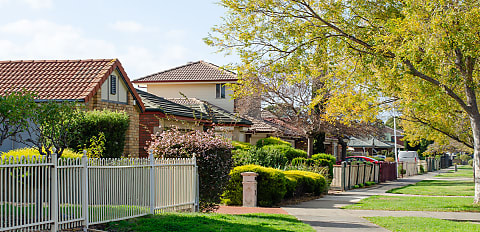Spring is a popular time for sellers and buyers, said CoreLogic, and the market is expected to see increased activity in the coming months.
In fact, the sales uplift between winter and spring sales is significant. The decade average rise in sales between Q2 and Q3 across Australia was 8.3 per cent. Meanwhile, the combined number for capital cities was 8.7 per cent.
Broken down, the decade average increases across the major cities were:
- Sydney (10.4 per cent)
- Melbourne (10.5 per cent)
- Brisbane (7.6 per cent)
- Perth (6.2 per cent)
- Hobart (12.3 per cent)
- Darwin (5.1 per cent)
Adelaide was the only city to experience a drop, with sales between winter and spring falling an average of 0.1 per cent over the last 10 years.
Similarly, CoreLogic also analysed the uplift in new listings between winter and spring over the decade. Australia-wide, this saw an 18.2 per cent increase and capital cities grew 20.2 per cent.
The average decade increases across the capital cities were:
- Sydney (20.3 per cent)
- Melbourne (26.7 per cent)
- Brisbane (10.6 per cent)
- Adelaide (26.8 per cent)
- Perth (16.5 per cent)
- Hobart (27.9 per cent)
The only city to witness a fall in new listings over the decade was Darwin, decreasing 1.9 per cent between winter and spring.
Despite seasonal trends, there are still a variety of outside factors that play a role in determining activity.
“Sales volumes across some cities have actually declined during spring when the market has been in a downswing, such as in Sydney and Melbourne in the spring of 2015, 2017 and 2018, when temporary macroprudential rules created a sharp decline in investor demand,” said CoreLogic’s head of research Australia, Eliza Owen.
“Looking at spring of 2024, it is possible we could see demand come under pressure from a continuation of high interest rates, slowing economic conditions and low consumer sentiment, and sellers may struggle in two of the state capitals in particular.”
According to Owen, predictions are assessed by considering the number of homes sold against the number of properties newly advertised for sale in the same period. With supply and demand varied across different parts of Australia, this can skew results in some regions.
“The state of supply and demand across the Australian capitals is highly varied, which will lead to equally varied outcomes this spring ... Markets with more sales than new listings are considered ‘seller’s’ markets, while markets with a higher number of new listings are generally more in favour of the buyer,” said Owen.
“The biggest discrepancies between sales and new listings are currently in Melbourne, where there were 5,400 more new listings added to the market in the past three months than sales taking place, and Adelaide and Perth were on the other end of the spectrum, where sales vastly outpaced the number of new listings added.
“This data suggests Perth and Adelaide sellers are heading into the spring selling season in a powerful position, with total stock on the market at very depleted levels and there has been more than one sale for each new listing added to the market in the past few months. The urgency across these markets is particularly evident in days on market, where the median selling time for Perth dwellings was just 10 days in the three months to July. In Adelaide, median days on market was higher (28), but is down from this time last year (33).”
The expected ramping up of activity was also seen in the auction rates, with activity climbing to over 2,000 for the first time since late June. Melbourne led the total auctions for the week hitting 897, followed by Sydney at 645, Adelaide at 150, and Brisbane at 144.
The clearance rate was highest in Adelaide, at 81.1 per cent. Trailing was Perth at 72.7 per cent, Brisbane at 55.3 per cent, Melbourne at 62.3 per cent, and Sydney at 61.2 per cent.
Throughout spring, CoreLogic expects a rise in new listings. This could help ease the strain on the property market. As it stands, Melbourne and Hobart are experiencing the largest vacancy rates. Perth and Adelaide on the other hand have seen vacancies fall dramatically over the last few years.
“A rise in new listings is anticipated, but a lift in demand may not occur at the same time. If we do see advertised stock levels rising though spring, it’s a good sign that we may see some further momentum leave the upswing in the Australian dwelling market,” said Owen.
[Related: Whether cheap or expensive, demand for property remains high]

